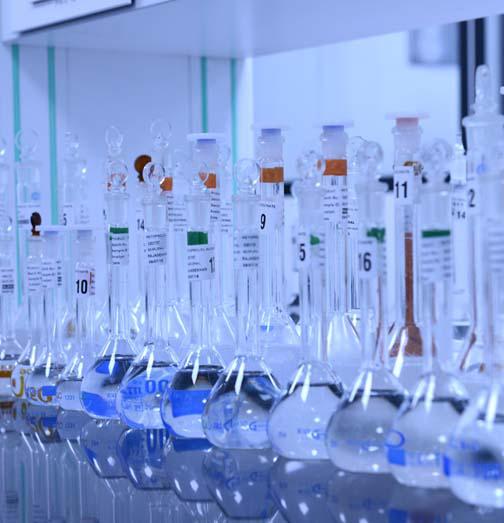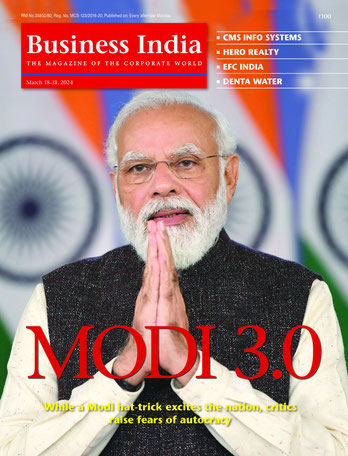-
I am not even calculating the opportunity cost of allocating our resources for this project, while reducing our production of other vaccines
Adar Poonawala
Normally these three stages are done sequentially. But for the Covid-19 vaccine, stage 1 and 2 have been combined, so that the entire process can be accelerated to a great extent. This was because of the urgent need for a vaccine to counter the rapidly spreading global pandemic. Also this particular vaccine had been earlier developed for the prevention of Ebola Virus Disease. It failed the effectiveness test but was found to be well tolerated in human subjects. Thus it had already passed Stage 1 but got stuck in Stage 2.
Now the latest Oxford study confirmed the fact that human subjects are able to tolerate it quite well, and in addition, it helps them develop adequate immunity against the Covid-19 virus. Thus the vaccine is quite ready to go into Stage 3, which is the larger trial involving 5,000-10,000 patients. This is about to start in the UK and would serve as the final touchstone before it can be marketed freely in various parts of the world.
In addition to the Oxford University-AstraZeneca Stage 1-2 trial, the results of which were published last week in the prestigious medical journal, Lancet, their vaccine will also have to undergo Stage 3 trials in India. Serum Institute has just applied to the Drug Controller General of India (DCGI) for permission to conduct this, and they expect to get the green signal in the coming fortnight. The completion of these final trials would occupy the next few months. Serum Institute will conduct the Stage 3 trials in approximately 4,000-5,000 people.
The number of people required for the Stage 3 clinical trials is determined by a globally recognised statistical model, which takes into account the number of final users of the particular product. In this case, the number of people who would need to be vaccinated going forward is in hundreds of millions, who might be vulnerable to the Corona Virus Disease for one reason or another. The number of people who have contracted the Corona Virus infection currently is upwards of 15 million.
The Serum Institute management has decided that the Stage 3 trials in India would largely be conducted in two cities – Mumbai and Pune, which have remained Covid-19 hotspots (with maximum cases) for the past two-three months. The hospitals and trial sites in these cities have been chosen because the vaccine is best put to trial in areas where the infection rates are highest; this would be the clearest indicator that the vaccine is effective. One point of criticism regarding the Stage 3 trials in the UK is that the general infection rates are declining; it would thus be harder to demonstrate that the vaccine is controlling the spread of the disease.
Another effort during the Stage 3 trials both in India and elsewhere would be to include the people above the age of 55, who are more vulnerable than the younger subjects. In the trials just completed, both in Oxford-AstraZeneca series and other similar trials being conducted in other parts of the world, the subjects chosen are 18-55 years of age. However, scientists have pointed out that it was not considered advisable to include older subjects in the Stage 1-2 until they could be assured that the product was safe. That has now been demonstrated quite well. In India, the trial universe would even include frontline healthcare workers who face a greater risk of exposure on account of their work.
-

Cyrus: building a world class institute. Photo credit: Umesh Goswami
Only after the Stage 3 trials have been completed successfully in India, could the AZD1222 vaccine obtain permission to be sold in India. Besides, Serum will also need a licence from the Indian government to manufacture the vaccine in the country. The company is likely to apply for the manufacturing licence later this week. But in view of their long and illustrious record in production of high quality vaccines, this would most probably be a mere formality. In fact, Serum officials have said that a few million doses of the new vaccine have already been test-manufactured, so that any glitches in the process can be ironed out. However, that part of the experiment was completed without any hurdles. Their plan is to produce about 60-70 million doses per month by September and double that quantity by the end of the year.
To speed up the entire process even further, Serum Institute has already started putting together a whole bunch of preparatory steps, such as raw materials, human resources, glass vials, etc. This is a relative risk because in the event of failure of the Stage 3 clinical trials, the entire investment of $200 million which Serum has made during the past few weeks could go to waste. A noteworthy point is that a very large number of therapeutic products (medicines, vaccines, sera, etc.) that reach the Stage 3 of clinical trials fail in this phase.
“I am not even calculating the opportunity cost of allocating our resources for this project, while reducing our production of other vaccines,” says Adar Poonawala, CEO, Serum Institute and son of Dr Cyrus Poonawala, the founder-chairman of the company. This is a significant issue because in a normal year, Serum produces almost 1.5 billion doses of vaccines that protect children everywhere from a wide spectrum of diseases. These include diphtheria, pertussis (whooping cough), tetanus, tuberculosis, measles, mumps and rubella (German measles). It is widely believed that nearly 65 per cent of the world’s children would have received one Serum Institute vaccine sometime in their lives! Thus over 20 per cent of the Institute’s normal vaccine output would have to be set aside for the demands of the Covid vaccine!
Serum’s manufacturing facilities have been recognised worldwide as being one of the highest quality, not only by the World Health Organization (WHO) but also the regulatory authorities of most western nations. The company has achieved continuous accreditation by the WHO for meeting the international body’s cGMP (Current Good Manufacturing Practices) norms, which enables it to market its vaccine products to many of the low income countries. Since these sales are financed by multi-country funding agencies including several arms of the UN, pre-qualification by the WHO is essential.
Technological prowess
In its 54 years of existence, having been established in 1966, Serum Institute has steadily enhanced its technological prowess at a rapid pace in keeping with the best practices used by most of its competitors. Thus, it uses a robotic arm for handling viruses (so that its employees are protected from infection) and a cell factory to ensure adequate raw materials for its manufacturing activities. Further it has built the technological capability to produce different types of vaccines including the more recently developed recombinant DNA based ones.
-

The flexibility of its manufacturing facilities allows the management to utilise the same factory unit for more than one vaccine, thus enabling them to switch from one product to another within a relatively short time. Serum Institute is thus able to adapt its manufacturing output from time to time, depending on demands from the global market. A case in point is the Corona Virus pandemic which has gone from inception to global spread within about seven months!
As a way of hedging their bets, the Serum management has signed similar agreements with a number of other companies for manufacturing their vaccines. One example is Novavax, which has also received $1.6 billion from the US federal government to facilitate the research and development process. Another is Codagenix, also US-based, with which Serum Institute has partnered and their product will also undergo clinical trials in India, along with other countries. In this case, the agreements are for global manufacturing and supply.
Among the other Indian companies having a Covid-19 vaccine in the works are: Bharat Biotech and ZydusCadila. In May and June this year, Hyderabad-based Bharat Biotech made steady progress in developing a vaccine candidate against Covid-19 in partnership with CSIR (Council for Scientific and Industrial Research) and later with ICMR (Indian Council for Medical Research). As the pre-clinical stage was passed, the DCGI granted permission earlier this month for human clinical trials to start.
While the Serum Institute-AstraZeneca offering is already on the verge of Stage 3 clinical trials, the Bharat Biotech version has to start from Stage 1. It is thus quite a distance behind the Serum timeline. The difference, of course, is that Bharat Biotech has developed its version entirely within the country. Hence it can legitimately claim to have discovered the first indigenous vaccine against Covid-19. It has, however, received a grant of $14.1 million from CEPI and has collaborated with Thomas Jefferson University of the US.
Endorsing the Bharat Biotech announcement, ICMR in its own release on 4 July said, “In the larger public health interest, it is important for ICMR to expedite the clinical trials with a promising indigenous vaccine. Faced with the unprecedented nature of the Covid-19 pandemic and the consequent dislocation of the normal life, all other vaccine candidates across the globe have been similarly fast-tracked. ICMR’s process is exactly in accordance with the globally accepted norms to fast-track the vaccine development for diseases of pandemic potential wherein human and animal trials can continue in parallel.”
-
Going almost neck and neck with AstraZeneca is a product offering from Cansino Biologics, China
Bharat Biotech is also an established player in the international vaccine arena, having been in the business for over two decades. Among its other offerings are viral vaccines to protect people against rabies, Japanese encephalitis (brain fever), rotavirus (which causes various forms of diarrhoea in children) and the dreaded H1N1 influenza. It also produces a series of recombinant (DNA-based) vaccines against Hepatitis-B, diphtheria, tetanus, whooping cough and other illnesses. “We seek to address the healthcare needs of billions of people in the emerging economies by driving innovation at the frontier of research and development,” says Dr Krishna Ella, CMD, Bharat Biotech.
Likewise ZydusCadila, one of the leading names in the country’s pharmaceutical industry, has come forward with its own vaccine against Covid-19. In the first week of July, the Ahmedabad-based drug major announced that it had successfully developed a DNA-based vaccine at its Vaccine Technology Centre, and that it has completed the pre-clinical stages of the trials.
“In animal studies the vaccine was found to elicit a strong immune response in multiple animal species like mice, rats, guinea pigs and rabbits. The antibodies produced by the vaccine were able to completely neutralise the wild type virus in virus neutralisation assay indicating the protective potential of the vaccine candidate,” says a company news release dated 3 July.
Zydus officials also said that no safety concerns were observed for the vaccine candidate in repeat dose toxicology studies by both intramuscular and intradermal routes of administration. In rabbits, up to three times the intended human dose was found to be safe, well tolerated and immunogenic. Zydus has already manufactured clinical GMP batches of the vaccine candidate and plans to initiate the clinical trials in July 2020 across multiple sites in India in over 1,000 subjects, they added.
Leaders and laggards
Apart from the Indian manufacturers, there are a number of global companies in the fray. Going almost neck and neck with AstraZeneca is a product offering from Cansino Biologics, China. Pharma industry newsletter, FiercePharma reports that Cansino conducted its own Stage 2 (efficacy) trial for a product developed in Wuhan and published the results in Lancet online at nearly the same time as Oxford-AstraZeneca article. The Chinese product was tested in about 605 healthy subjects, compared to about 1,000 in the UK study. Also, the results showed its impact was less powerful than that which Serum is proposing to manufacture.
-

ZydusCadila’s DNA-based vaccine
Then there are Pfizer and Moderna, who also have their hats in the ring. Both are US-based companies but Moderna is a little ahead of Pfizer. In mid-July, Moderna announced the interim results of their Phase I (study of potential adverse effects) in the New England Journal of Medicine. This was from a small trial of just 45 patients and it showed that both forms of immunity were enhanced with their vaccine. The trial also indicated that of the three doses given to the trial subjects, the most effective was 100 micrograms – the smaller doses did not work that well. Besides, the vaccine appears to be well tolerated since no serious adverse effects were noticed.
The real laggard in the pack appears to be Novavax, which was supposed to announce its first set of results (for Stage 1&2) on 20 July, the same day as the publication of the two Lancet articles. But on the appointed day, Novavax executives postponed their results to the end of the month. Meanwhile, its share prices have skyrocketed to nearly 35 times between March and May this year as they announced the start of human trials. Investors who snapped up the Novavax shares in large numbers are now fervently praying that the share price does not crash.
There are about two dozen others too in various stages of development, but most of them have not yet completed their trials in animal models. That is mandatory before the regulatory authorities in any country would even the vaccine to be given to human subjects.
One can expect therefore that most of these products would complete their human trials during the course of 2021. Given the humungous numbers of people all over the world who would require some form of vaccination against Covid-19, there is probably enough room for everyone in the global market place.
Meanwhile, the companies concerned are so confident that most have already started publicising their respective brand names. Thus AstraZeneca has chosen the name ‘Covishield’ for theirs, while Bharat Biotech calls it ‘Covaxin’ and ZydusCadila has named its product as ‘ZyCov-D'.
On the other hand, excitement is building up to fever pitch among ordinary people, even as extensive coverage on television news eggs it on further. Social media is already swirling with predictions that the AstraZeneca-Serum Institute duo might launch its product on 25 December, that is, Christmas Day. If that does indeed come true, it could be the greatest Christmas gift the world has received in a very long time.






































